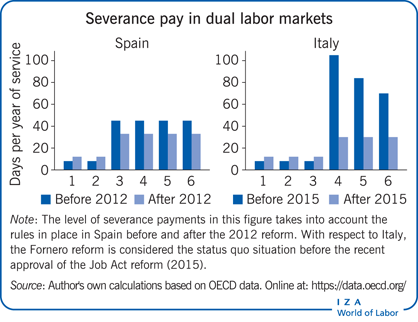Elevator pitch
The trend towards labor market flexibility in Europe has typically involved introducing legislation that makes it easier for firms to issue temporary contracts with low firing costs, while not changing the level of protection that is in place for permanent jobs. This has created a strong “dualism” in some European labor markets, which might affect turnover, wage setting, and human capital accumulation. In view of this, some economists propose replacing the existing system of temporary and permanent contracts by a single open-ended contract for new hires, with severance pay smoothly increasing with tenure on the job.

Key findings
Pros
Eliminating temporary contracts will improve productivity as a result of the positive effect permanent contracts would have on workers’ morale and involvement in the firm.
Employer-provided training would increase under more permanent employment relationships.
A single contract would help to reduce the excess turnover suffered by young workers with low seniority rights, which would also reduce income inequality.
Cons
Introducing a single contract would still lead to inequality in seniority rights and may not eliminate “dualism” in the labor market.
Removing temporary contracts would lead to adverse employment effects if employment protection associated with permanent contracts remains unaffected, especially during recessions.
Eliminating temporary contracts may foster the use of other types of atypical contracts.
The implementation of a single contract might be in conflict with some legal conventions that require a valid reason to terminate an employment relationship.